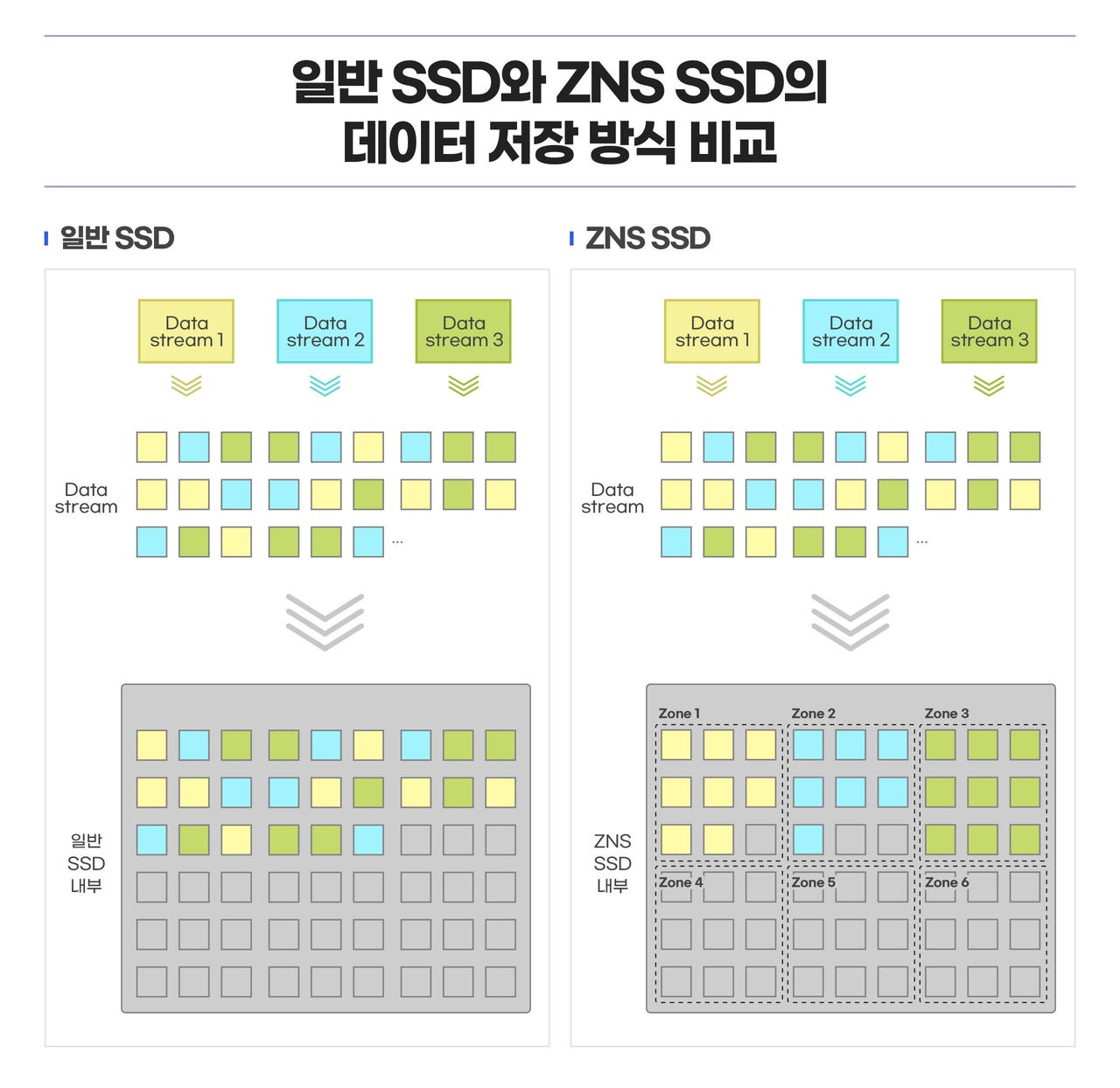Samsung launches first Zoned Namespace SSD for enterprise servers


Samsung on Wednesday introduced a new SSD that features Zoned Namespace (ZNS) technology aimed at enterprise servers.
The new PM1731a comes in a 2.5-inch form factor, features dual ports, and will be available with either 2TB or 4TB storage. The SSD was built with the company's sixth-generation V-NAND.
Its biggest differentiating point compared to other SSDs is it uses ZNS technology based on the specification set by the NVMe organisation. ZNS separates the storage space into independent "zones". Data with similar usage and access frequency are grouped together and stored in the same zone. This differs from conventional SSDs that save data randomly on the storage.
As the new SSD doesn't need to move and rearrange data, ZNS SSDs can reduce the number of write operations significantly, making them more efficient and have longer lifespans.
Samsung claimed its new SSD can achieve a write amplification factor -- the ratio of actual writes performed by the drive compared to those instructed by the host -- of close to one.
This is a major improvement over typical server SSDs that have to write amplification factor values of between three to four, the South Korean tech giant claimed. This means PM1731a will last up to four times longer than its conventional NVMe counterparts, Samsung added.
Having ZNS also eliminates the need for over-provisioning or reserving storage space for background tasks, which means users will be able to use the full storage space available, the company added.
Samsung will begin mass production of its ZNS SSDs in the second half of the year.
The company said it would make its ZNS Technology available on user library xNVMe. It will also be available on Intel's Storage Performance Development Kit community.
Last month, Samsung announced that it developed a CXL interface DRAM module. In April, the company launched its first SAS-4 enterprise SSD.
RELATED COVERAGE
- In smartphone exit, LG's loss will be Samsung's gain
- Samsung raises spending in logic chip businesses to $151 billion
- Samsung develops first CXL interface based DRAM
- Samsung's Q1 earnings buoyed by smartphones and consumer electronics
- Samsung heir and family to pay $10.8 billion in inheritance tax
- Samsung launches SAS-4 enterprise SSD for servers